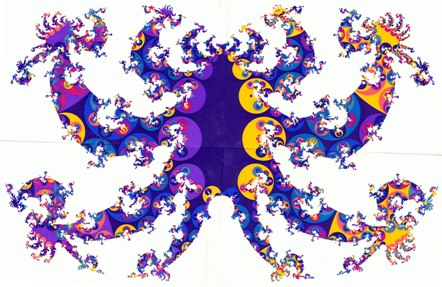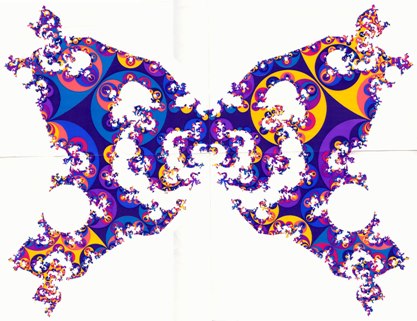Tomaschitz, R. (1994). Chaos in cosmology, in: Fractals in the Natural and Applied Sciences (London, Sept. 7-11, 1993, M. M. Novak, ed.) IFIP Transactions A-41, Elsevier, Amsterdam, 1994, pp. 431-439.
Abstract (CDS, SAO/NASA ADS)
We consider open cosmological models with multiply connected spacelike slices. In these universes there is a finite, convex region in which the world lines turn chaotic. We point out some physical effects of the topology in wave fields, like particle creation–annihilation, violation of the space-reflection symmetry, and fluctuations in the temperature of the microwave background. The evolution of classical and quantum mechanical probability densities under the mixing horospherical flow is discussed.
|
Title: |
|
Chaos in cosmology |
|
Authors: |
|
Tomaschitz, Roman |
|
Affiliation: |
|
AA(Physics Department, University of the Witwatersrand, Johannesburg, WITS 2050, South Africa) |
|
Publication: |
|
Fractals in the Natural and Applied Sciences (M. M. Novak, ed.) IFIP Transactions A-41, North-Holland, Amsterdam, 1994, pp. 431-439. |
|
Publication Date: |
|
00/1994 |
|
Origin: |
|
AUTHOR |
|
Keywords: |
|
relativistic chaos, open Robertson-Walker cosmology, multiply connected hyperbolic |
|
Abstract Copyright: |
|
1994 Elsevier Science B.V. (North-Holland) |
|
Bibliographic Code: |
|

Figure 1. Tiling on the plane at infinity of the Poincaré half-space H3. A spacelike slice (F,Γ) is realized in H3 as a polyhedron F with a face-identification.15,16 The identifying transformations generate a discrete group Γ. This group Γ applied to the polyhedron gives a tessellation Γ(F) of H3 with polyhedral images. This tessellation induces a tiling on the boundary of H3. There is also a tiling exterior to the Jordan curve. Figures 1 and 2 stem from manifolds which are topologically equivalent but non-isometric (I × S, g(S) = 49, δ(Λ) = 1.5). full size image

Figure 2. The singular curve Λ(Γ) is the set of accumulation points of the polyhedral tiling Γ(F) of H3. The half-space H3 is the universal covering space of a multiply connected three-manifold (F,Γ) that represents a spacelike slice of the universe at a given instant of time. The center C(Λ)\Γ of the three-manifold is the intersection of the hyperbolic convex hull C(Λ) of Λ(Γ) with the polyhedron F. Its boundaries on the polyhedral faces are identified by elements of the covering group Γ. Trajectories that are mixing in the center of the spacelike slices are unstable and have covering trajectories with an end point in Λ(Γ). full size image
description: Roman Tomaschitz (1994) Chaos in cosmology, in: Fractals in the Natural and Applied Sciences (M. M. Novak, ed.) IFIP Transactions A-41, Elsevier, Amsterdam, pp. 431-439.
Keywords: relativistic chaos, open Robertson-Walker cosmology with multiply connected hyperbolic 3-space, mixing in the chaotic center of the universe, topological backscattering and particle production, temperature anisotropy of the microwave background radiation, global metrical deformations of open hyperbolic 3-manifolds, parity violation by topological self-interference, fractal limit set of a Kleinian covering group, Hausdorff dimension, quasi-Fuchsian groups, fibered hyperbolic 3-manifolds, compact Riemann surfaces, hyperbolic convex hull of a limit set, polyhedral tessellation of hyperbolic space, universal covering projection, chaotic world lines, Bernoulli property
download full-text article (scanned PDF, 2.2 MB)